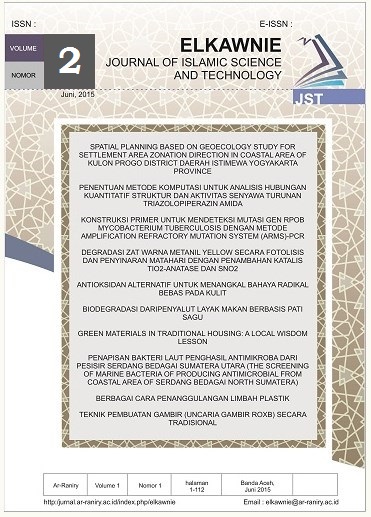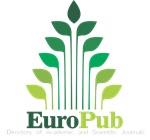Analysis of Vitamin C Level Contained in Mango Gadung (Mangifera indica L) With Varied Retention Time
DOI:
https://doi.org/10.22373/ekw.v2i1.658Keywords:
mango Gadung, vitamin C, iodimetric titration, varied retention time.Abstract
This research is aimed to determine the level of vitamin C in the mango Gadung which stored as long as 0 days; 1 day; 2 days; and 3 days. It is used iodimetric titration. Standard iodine solution used as titrant while starch as the indicator. Determination of raw normality iodine standardization carried out by titration of iodine with sodium thiosulphate solution primer. Normality primary sodium thiosulphate solution (0.0125 N) are determined through standardized sodium thiosulphate with potassium dichromate. Levels of vitamin C in the fruit is determined by linear regression analysis were made based on the graph of the vitamin C levels versus volume of iodine standard solution which used in the titration. The curve gives the equation as following: y = 413.8 x – 1.238. Levels of vitamin C of mango Gadung which has varied retention time as follows: 0.26% (0 days); 0.22% (1 day); 0.20% (2 days); and 0.16% (3 days).Downloads
Published
Issue
Section
License
Proposed Policy for Journals That Offer Open Access Authors who publish with the Elkawnie journal agree to the following terms:
a. Authors retain copyright and grant the journal right of first publication with the work simultaneously licensed under a Creative Commons Attribution License that allows others to share the work with an acknowledgement of the work's authorship and initial publication in this journal.
b. Authors are able to enter into separate, additional contractual arrangements for the non-exclusive distribution of the journal's published version of the work (e.g., post it to an institutional repository or publish it in a book), with an acknowledgement of its initial publication in this journal.
c. Authors are permitted and encouraged to post their work online (e.g., in institutional repositories or on their website) prior to and during the submission process, as it can lead to productive exchanges, as well as earlier and greater citation of published work (see The Effect of Open Access).

























